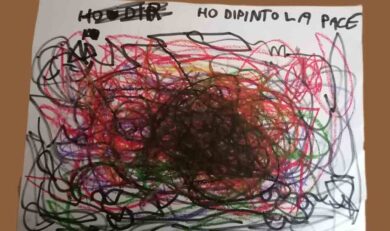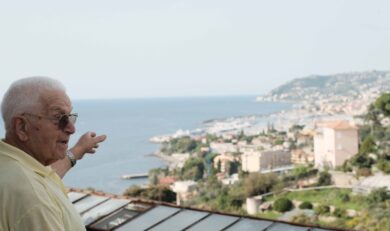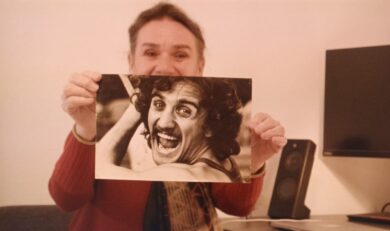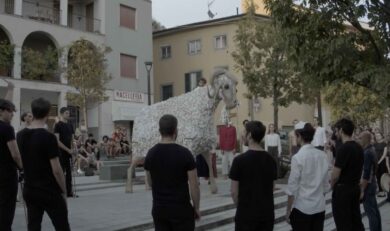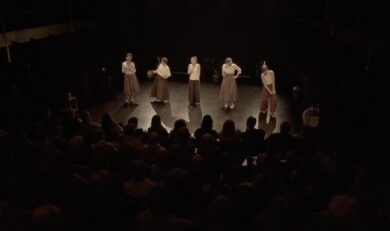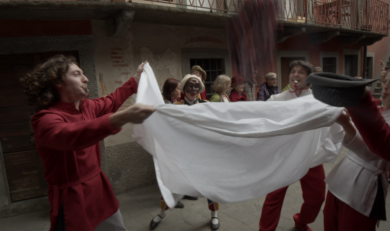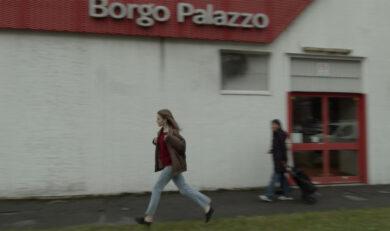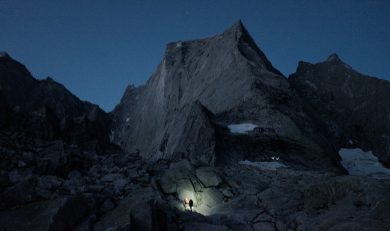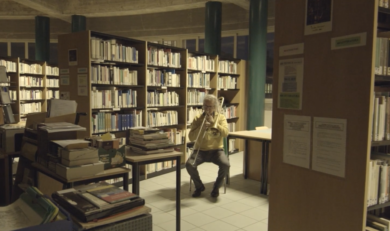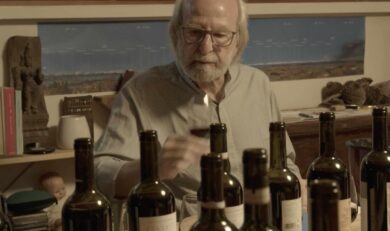
El Tascabile y yo
El Tascabile y Yo. Die Artisten in der Zirkuskuppel, todavía ratlos
a film by Alberto Valtellina (2018/2024, 72′)
with the Teatro Tascabile di Bergamo (TTB) acting company: Alessia Baldassari, Tiziana Barbiero, Luigia Calcaterra, Beppe Chierichetti, Antonietta Fusco, Alberto Gorla, Ruben Manenti, Simone Naldi, Alessandro Rigoletti, Clara Rigoletti, Caterina Scotti, Marta Suardi, and with Maurizio Stefania, Lorenzo Bucci, Osvaldo Arioldi, Fabio Vignaroli, Alberto Valtellina (voice-over). Script, screenplay, filming, editing, music, production and distribution by Alberto Valtellina.
un film di Alberto Valtellina con le attrici e gli attori del Teatro tascabile di Bergamo: Alessia Baldassari, Tiziana Barbiero, Luigia Calcaterra, Beppe Chierichetti, Antonietta Fusco, Alberto Gorla, Ruben Manenti, Simone Naldi, Alessandro Rigoletti, Clara Rigoletti, Caterina Scotti, Marta Suardi e con Maurzio Stefania, Lorenzo Bucci, Osvaldo Arioldi, Fabio Vignaroli, Alberto Valtellina (voce off). Soggetto, sceneggiatura, riprese, montaggio, musica, produzione e distribuzione Alberto Valtellina.
Festival: Lapua Art & Film Festival (Finlandia).
Synopsis
The film is about The Yoricks, a theatrical performance by Teatro Tascabile Bergamo (TTB). It focuses on “the perplexity of artists under the circus tent”, i.e., the perplexity of today, which is similar to the perplexity of yesterday, but a bit more complicated. It is the perplexity brought about by competition notices – regional, ministerial, or sponsored by banks – or by procedures for financing software, or restorations, or shows. A plethora of small, targeted murders that in turn are the result of small, targeted funding. The film starts with the preparation of the première in late March, and unfolds back from the previous July, when the show (still a work in progress) was presented to a small audience made up by friends. However, the show itself never appears in the film.
Sinossi
Lo spettacolo The Yoricks del Teatro tascabile di Bergamo. Come raccontare la “perplessità degli artisti sotto la tenda del circo”. La perplessità di oggi, che è una perplessità di ieri, solo più complicata. La perplessità per ì bandi regionali, ministeriali, bancari, la perplessità per il finanziamento dei software, del restauro, degli spettacoli. Piccoli omicidi mirati, esito di piccoli finanziamenti mirati. Il film inizia con la preparazione del debutto, a fine marzo, e risale la corrente temporale dal luglio precedente, quando lo spettacolo, nella sua forma iniziale di work in progress era stato presentato a un pubblico di amici. Lo spettacolo non appare mai nel film.
Director Statement
“Death is so much more fascinating than life. After The Isle of the Dead, Böcklin did paint an Isle of the Living, but with incomparably inferior results. Might this prove that art should show humankind what it cannot see for itself?”
Alberto Savinio, Narrate, uomini, la vostra storia
The art of retrieving, or “rubar gracefully and in time”
“Art stands in this maxim: Rubar [stealing] gracefully and in time” (Giuseppe Verdi, Falstaff, Act I). Like all TTB productions, The Yoricks has different roots. It is both a spin-off of previous shows and the result of historical materials being stolen, reworked and re-read through drifting and shifting strategies. It is full of both internal cultural references and external movements, scenes, costumes and music. It is indeed an art of shifting: anything that is retrieved from the past, anything that is a reference to something else, acquires new life and new meanings from being integrated in a new context. I don’t like voice-over. Nor do I like cinematic metaphors. Unless they have regional connotations – but what, if anything, does providing metaphors with regional connotations even mean? The voice-over in the film is mine, and it’s not even too proudly regional. There may perhaps be some undeclared metaphors here and there, for which reason I can only say: perhaps. There is indeed a cultural connection with a film that was, and remains, a key reference: Die Artisten in der Zirkuskuppel: ratlos (The Artists Under the Curtain of the Circus: Puzzled) by Alexander Kluge, 1968. In El Tascabile y yo quotes from Die Artisten in der Zirkuskuppel: ratlos are blatantly declared, obviously manifest and ostentatious, as they gently offer and suggest small alterations, integrations, comments and updates to what is going on onstage.
The film starts with the preparation of the premiere in late March, and unfolds back from the previous July, when the show (still a work in progress) was presented to a small audience made up by friends. The show itself never appears in the film, which – as a consequence – develops throughout forty days of rehearsals. The shooting style is deceitfully observational, as in a spy story, perhaps. (In the sense that I went around snooping, even though I was happy, where appropriate, to censor myself.) My interventions are irrelevant, except they signal a presence. Which means the camera’s gaze cannot be objective, for it participates in what is going on. Behind the camera, a foreign character observes and records what he sees. He is not indifferent, and the context reacts to his presence.
The film’s dramatic development is coherently and somehow surgically constructed: it is contemplated in a restricted, dry, freeze-dried form. The “frames” that we see, the “days” that go by, do reveal but parts of the show, thus literally documenting its construction.
The title “El Tascabile” is in Castilian. I once heard people respectfully speak about TTB in a lost village in the South of Argentina, on the Rio Negro. Over the years, many times has TTB been invited to theatre festivals in South America. Paradoxically enough, it is better known in Argentina, Mexico or Colombia than in Italy.
Note di regia
«La morte affascina molto più della vita. Dopo L’isola dei morti Böcklin dipinse un’Isola dei vivi, ma con esito incomparabilmente minore. È anche questa forse una dimostrazione che l’arte deve mostrare all’uomo ciò che l’uomo non riesce a vedere da sé?»
Alberto Savinio, Narrate, uomini, la vostra storia
Recuperi: rubar con garbo e a tempo
«L’arte sta in questa massima: rubar con garbo e a tempo», una citazione appropriata, dal Falstaff di Giuseppe Verdi. Come tutte le produzioni TTB, lo spettacolo The Yoricks nasce da diverse “costole”: è spin-off di altri spettacoli, è rielaborazione di materiali storici, “rubati”, riletti attraverso derive e slittamenti, è denso di riferimenti culturali interni, di “ripescaggi” di singoli movimenti, di intere scene, di costumi, di musiche. Slittamenti: ogni recupero e ogni riferimento, inserito in un blocco nuovo, acquisisce una nuova vita, un senso diverso.
Non amo la voce fuori campo e non amo le metafore al cinema, a meno che non abbiano connotazione regionale (da verificare la possibilità di esprimere cinematograficamente una metafora con connotazione regionale). Nel film c’è una voce fuori campo, la mia, con connotazione neppure troppo orgogliosamente regionale, forse c’è qualche metafora, ma non dichiarata, quindi: forse. Un legame “culturale” è con un film che era, e rimane, un riferimento: Die Artisten in der Zirkuskuppel: ratlos (Gli artisti sotto la tenda del circo: perplessi, di Alexander Kluge, 1968). In El Tascabile y yo la citazione da Die Artisten in der Zirkuskuppel: ratlos è smaccata, dichiarata, straniante, palesata, ostentata: offre e suggerisce alcune piccole delicate alterazioni, propone integrazioni, commenti, aggiornamenti.
Il film inizia con la preparazione del debutto, a fine marzo, e risale la corrente temporale dal luglio precedente, quando lo spettacolo, nella sua forma iniziale di work in progress era stato presentato a un pubblico di amici. Lo spettacolo non appare mai nel film, che invece si compone attraverso il racconto di circa quaranta giornate di prove, le riprese sono in modalità falsamente observational, forse più spy story, nel senso dello spione, ma uno spione che volentieri si autocensura ove necessario. I miei interventi dal vivo sono irrilevanti ma segnalano la presenza: lo sguardo della macchina da presa non è oggettivo, partecipa. Dietro alla macchina da presa, una figura estranea osserva e registra, non è indifferente e il contesto ne percepisce la presenza.
Lo sviluppo drammaturgico del film è contemplato, coerentemente e chirurgicamente costruito: è contemplato in forma ristretta, asciutta, liofilizzata. I “quadri”, le “giornate”, rivelano parti dello spettacolo, ne documentano la costruzione.
“El Tascabile” in castigliano, perché ho sentito citare con rispetto il nome del gruppo in un paesino perso nel Sud dell’Argentina, sul Rio Negro. Il Teatro Tascabile è stato invitato molte volte, negli anni, in Sud America, all’interno di Festival di teatro e paradossalmente è più conosciuto in Argentina, Messico o Colombia che in Italia.
